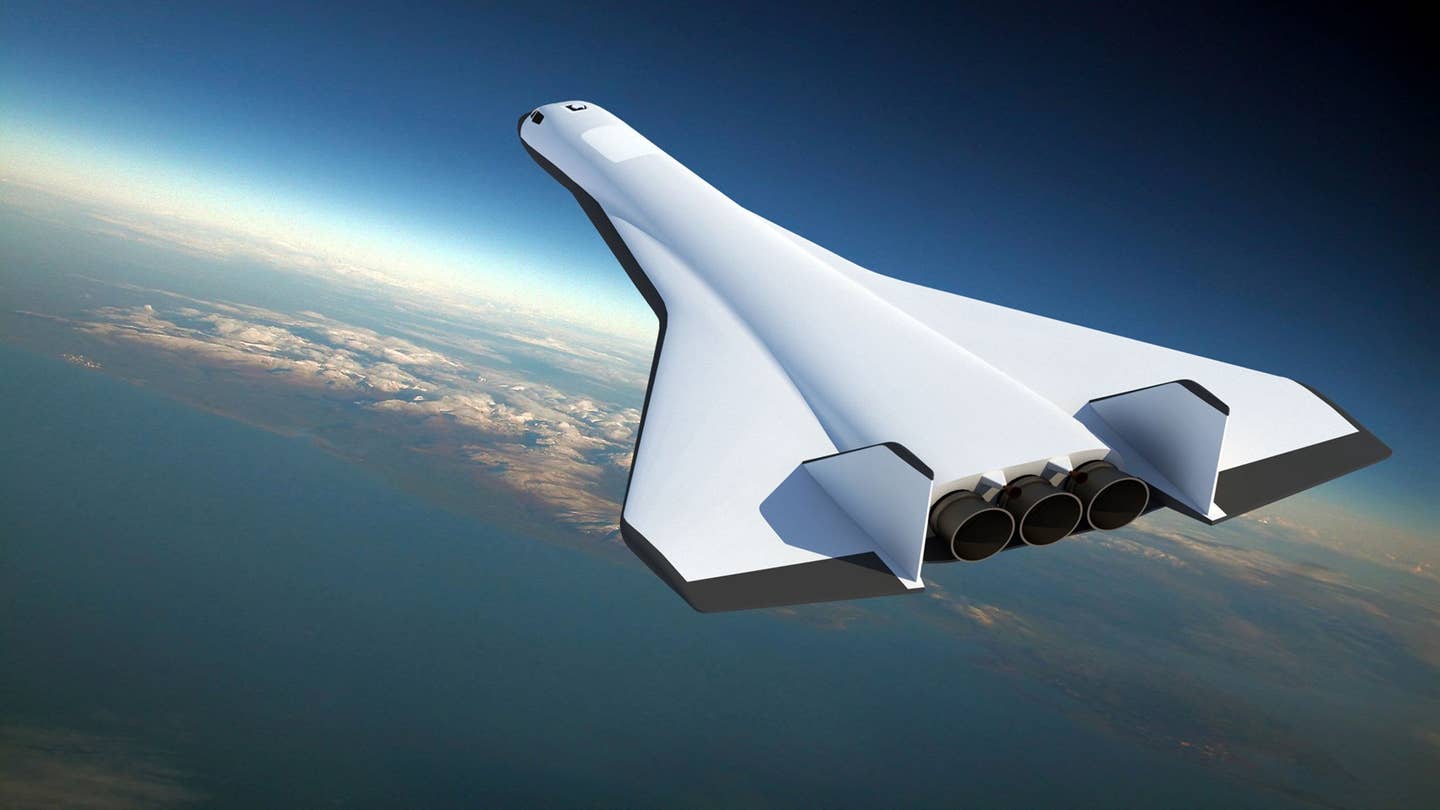Radian Aerospace Wants to Build ‘Holy Grail’ Spaceplane
A Washington-based startup says it’s planning to build what has long been considered the “Holy Grail” of accessing space: the world’s first reusable single-stage orbital spaceplane aimed at carrying cargo and people.

An artist’s rendering of Radian Aerospace’s fully reusable horizontal takeoff and landing, single-stage to orbit spaceplane flying over Earth. [Courtesy: Radian Aerospace]
A Washington-based startup says it’s planning to build what has long been considered the “Holy Grail” of accessing space: the world’s first reusable single-stage orbital spaceplane aimed at carrying cargo and people.
In a statement Wednesday, Radian Aerospace said it had “emerged from stealth” after raising $27.5 million in seed funding, led by Fine Structure Ventures. Other investors included EXOR, Helios Capital, Explorer 1 Fund, and several more.
Greetings Twitterverse! We're Radian and we're building the world's first fully reusable horizontal takeoff & landing, single-stage to orbit spaceplane. Follow us as we work to unlock the potential of space. https://t.co/e587q0tuZJ pic.twitter.com/gxQ5vKkaRf
— Radian Aerospace (@RadianSpace) January 19, 2022
According to the company’s website, Radian aims to develop the first crewed, reusable space vehicle—what it calls Radian One—capable of reaching low-Earth orbit (LEO) and repeating the trip in as little as 48 hours.
“To date, a low-cost space transport solution has been lacking that can get humans and cargo to and from space at a highly responsive rate,” said Brett Rome, Venture Partner at Fine Structure Ventures, in a statement. “Radian is well-positioned to fill that gap with disruptive technology that helps enable the emerging space economy. We are confident in the experienced team at Radian, and thrilled to be supporting its mission as Radian works to revolutionize the future of space access.”
The unique design of the spaceplane would perform a sled-assisted takeoff, steadily ascend to LEO, and land on any 10,000-foot runway.
‘What We Are Doing Is Hard’
“Wings offer capabilities and mission types that are simply not possible with traditional vertical takeoff right circular cylinder rockets,” said Livingston Holder, Radian’s co-founder in a statement. “What we are doing is hard, but it's no longer impossible thanks to significant advancements in materials science, miniaturization, and manufacturing technologies.”
Holder is also Radian’s CTO and former head of the Future Space Transportation and X-33 program at Boeing.
‘Holy Grail’ of Space
What Radian is attempting has long been considered the “Holy Grail” of “accessing space with full reusability and responsiveness,” according to former Lockheed Martin executive Doug Greenlaw, who is an investor and adviser for the company.
In the 1990s, NASA spent $922 million on a similar effort with Lockheed Martin’s X-33, an uncrewed, sub-scale technology, demonstrator, suborbital spaceplane. But issues and delays led to the project’s cancellation in 2001.
According to Radian, the company has already secured launch service agreements with the U.S. government, selected foreign governments, and commercial space stations.
“On-demand space operations is a growing economy, and I believe Radian's technology can deliver on the right-sized, high-cadence operations that the market opportunity is showing,” said Dylan Taylor, chairman and CEO of Voyager Space, in a statement. “I am confident in the team working at Radian and look forward to cheering them along in this historical endeavor.”

Subscribe to Our Newsletter
Get the latest FLYING stories delivered directly to your inbox






